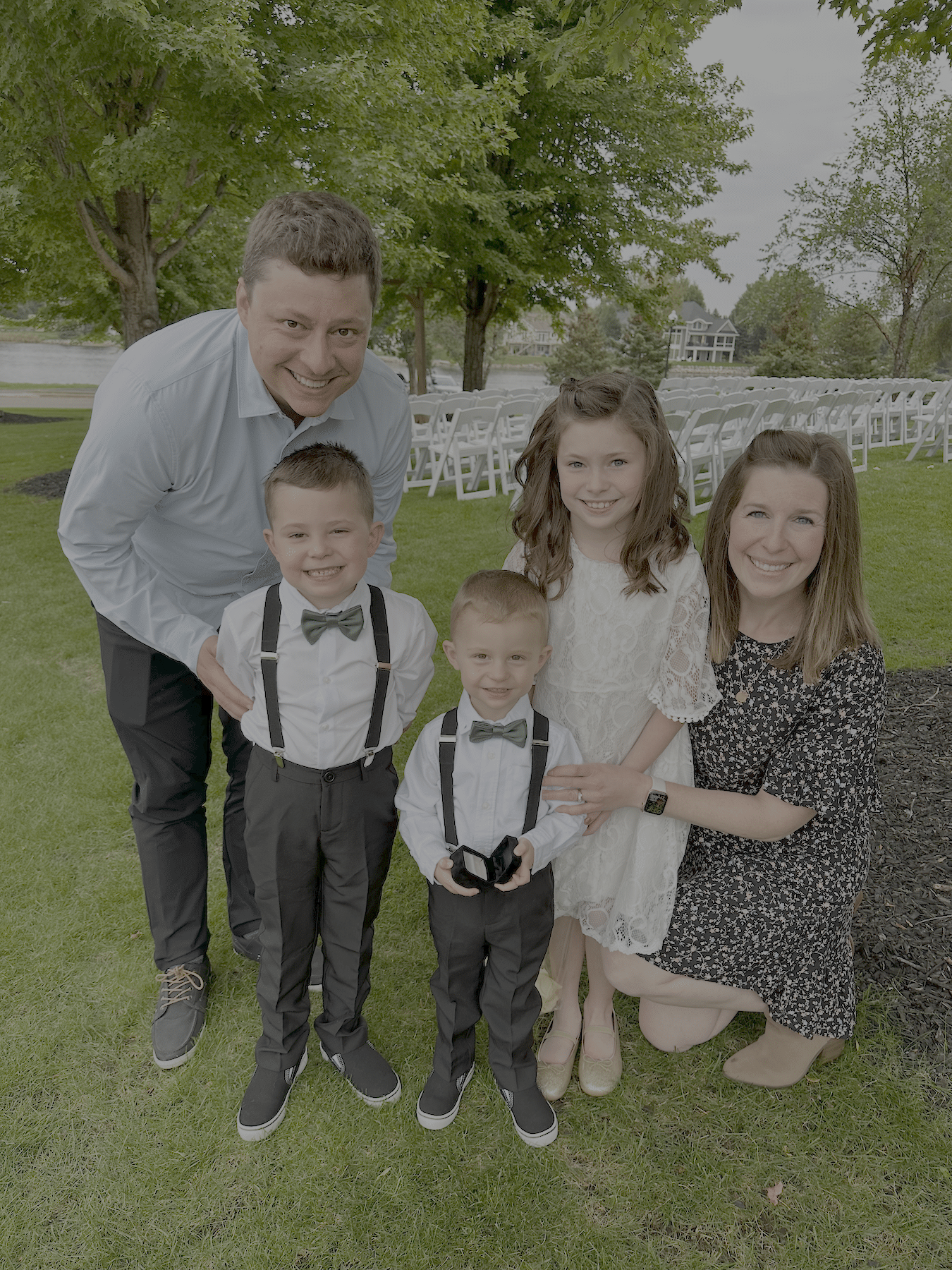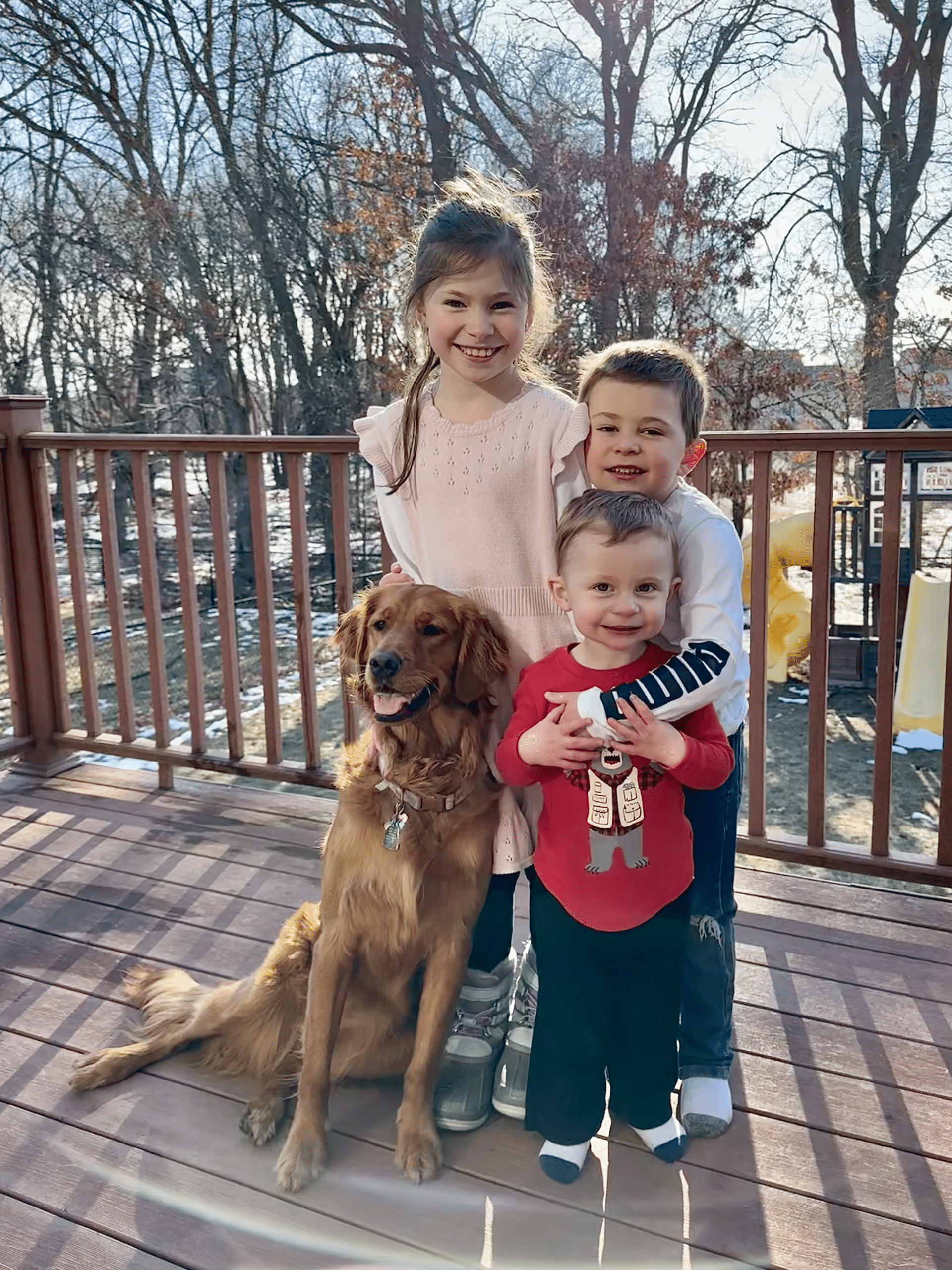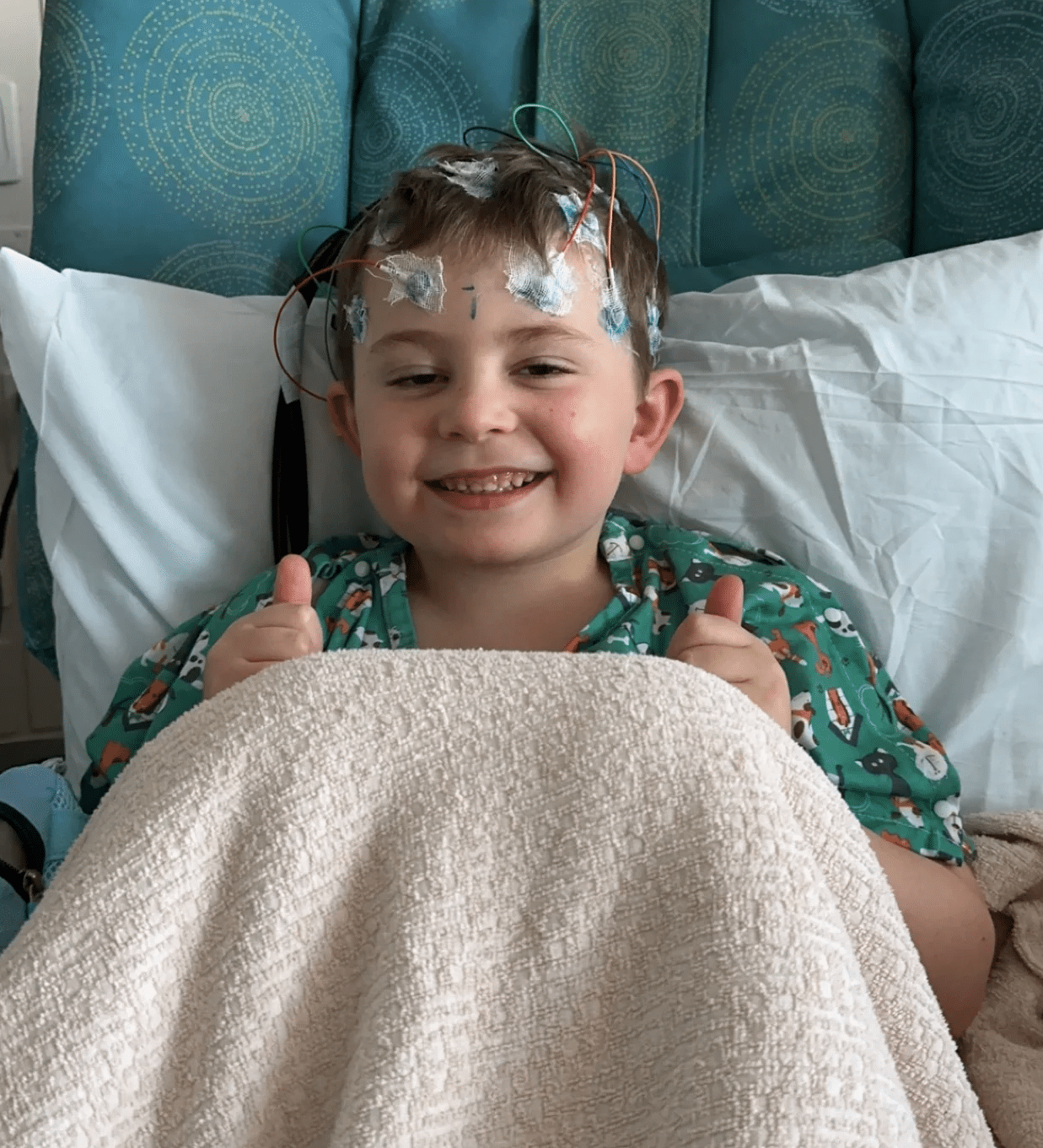
Ylvisaker Family
About Us
Welcome to the Strong Brave Hopeful Foundation! Whether you are seeking comfort, strength, and support during a challenging journey or you feel called to make a meaningful impact in the lives of others, we are so grateful you’re here.
Let’s introduce ourselves. We are a family of five — well, six, if you count our loyal golden retriever, the inspiration for our HOPE dog. We’re from central Minnesota, and in 2023, our lives changed forever. Our healthy 5.5-year-old middle child, Griffin, suddenly began experiencing epileptic seizures. His journey led to a diagnosis of Ring 20 Chromosome Syndrome, a rare and complex condition characterized by uncontrolled, unpredictable epileptic seizures. To read the full story, visit our “Griffin’s Story” page.
Navigating this path has been undeniably difficult. But we have been blessed with incredible love and support from those around us. It was this unwavering support, combined with a powerful sermon that encouraged us to find purpose in our pain, that inspired us to create this foundation.
Our mission is clear: to support families facing life with a child diagnosed with a life-altering neurological condition — focusing especially on Epilepsy and Ring 20. We aim to bring peace, courage, strength, and hope to families experiencing similar journeys.
How do we help? Through simple yet impactful gestures, like our HOPE Box, designed to comfort children during their first EEG or to help siblings understand and cope. We offer free meals at the hospital when cafeteria food loses its appeal, and DoorDash costs become overwhelming. We also support families with larger needs, like assistance with genetic testing to find the ‘why,’ or funding for therapy dogs to provide emotional support or seizure detection.
Please explore our “Programs” page to learn more about the many ways we strive to support you. This journey is challenging, but you are not alone. Let us help carry some of the weight. We are here with you and for you.
Griffin’s Story
Meet the Superhero
Griffin was a very active, silly, and caring 5.5-year-old boy. He had just finished Pre-K and was hitting many milestones typical of late kindergarten; he was thriving. Early in the summer of 2023, we noticed a short episode in our family room where Griffin didn’t respond to us and seemed a bit limp. When he came out of it laughing, we thought he was just playing. Two days later, at the beach with my sister-in-law and his cousins, Griffin had a noticeable absence seizure. He emerged from it crying and distraught, but then went off to play at the playground. As a nurse, I recognized what had happened, but I tried to remain calm, unaware of how much our lives were about to change.
Just two days later, while eating lunch at home, Griffin had a tonic-clonic seizure. Thankfully, his sister was at summer camp and his little brother was sleeping. It was one of the scariest moments of my life; he turned blue, and I felt completely helpless. As a nurse, I wanted to hit a code blue button, grab my oxygen and suction equipment, call my team for help, etc., but it was just us and our child, waiting for EMS.
The rest of the summer was filled with hospital visits. We began at the U of M Masonic Children’s Hospital, which is very dear to my heart. We had a wonderful neurologist, but we struggled to get Griffin’s seizures under control. His MRIs and autoimmune tests were normal, his initial genetic testing was normal, but the EEGs were very abnormal. By then, he was on three anti-seizure medications, and we added a fourth (Keppra, Vimpat, Clobazam, and Depakote)
We decided to reach out to the Minnesota Epilepsy Group, which collaborates with Children’s Hospital Minnesota. Here, we worked with an epileptologist. Right before Christmas, our sweet warrior underwent another MRI (normal), lumbar puncture (normal), autoimmune panel (normal), and EEG (abnormal). His epileptologist recommended a round of high-dose steroids and added a new medication (Felbamate). Although Griffin gained a lot of weight from the steroids, we experienced a stretch of 10 days with no clinical seizure activity, which felt like a significant win!
Things slowly returned to being uncontrolled. Over the next 2-3 months, we made minor medication changes (Trileptal vs Vimpat) and tried IVIG twice due to his positive response to high-dose steroids. By April, we were in a terrible spot: seizures were frequent, sometimes lasting over 20 minutes, and he wasn’t responding to rescue medications. The doctors considered moving him to the PICU (pediatric ICU). Thankfully, we switched our epileptologist, who then helped stabilize his condition.


